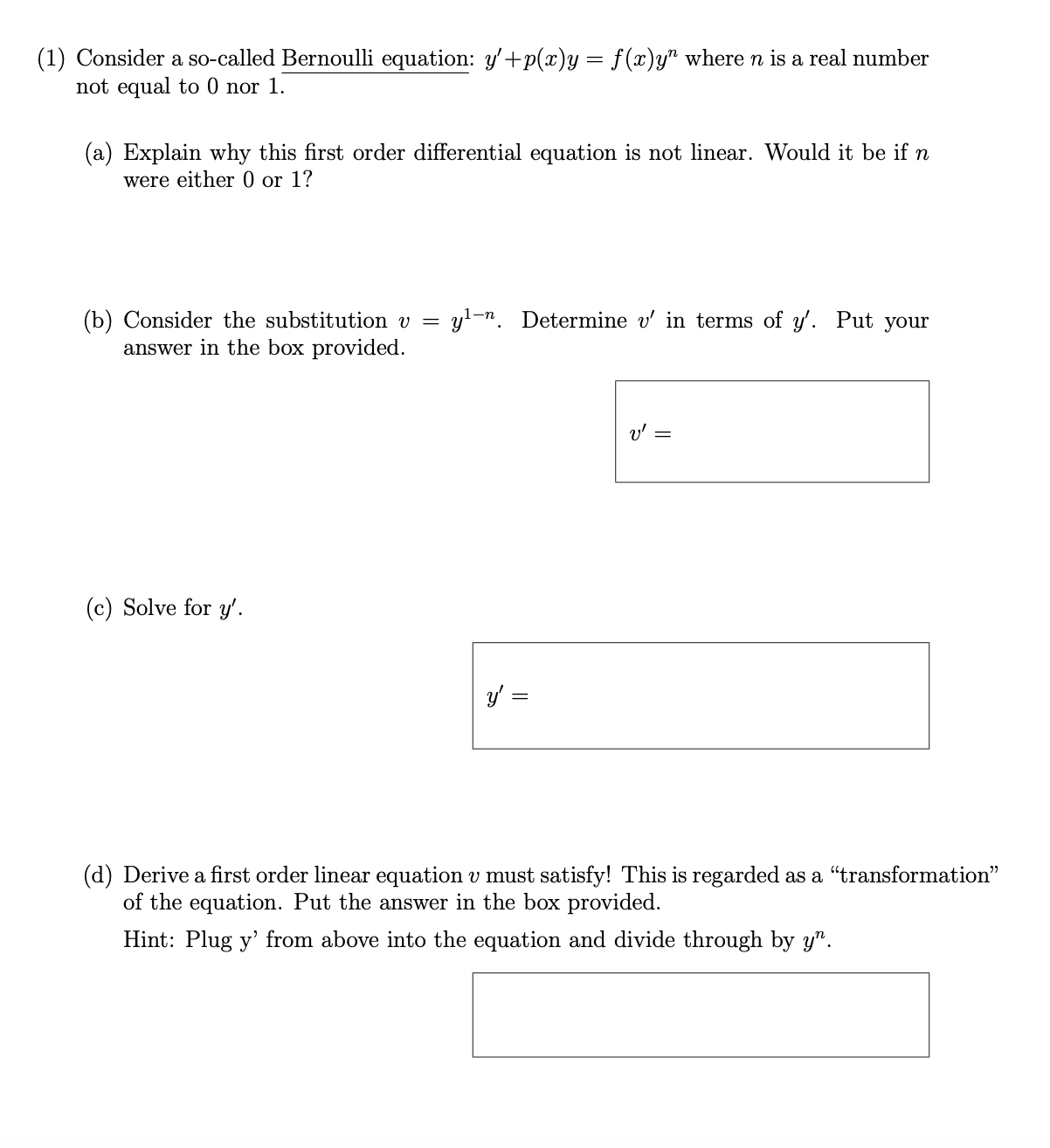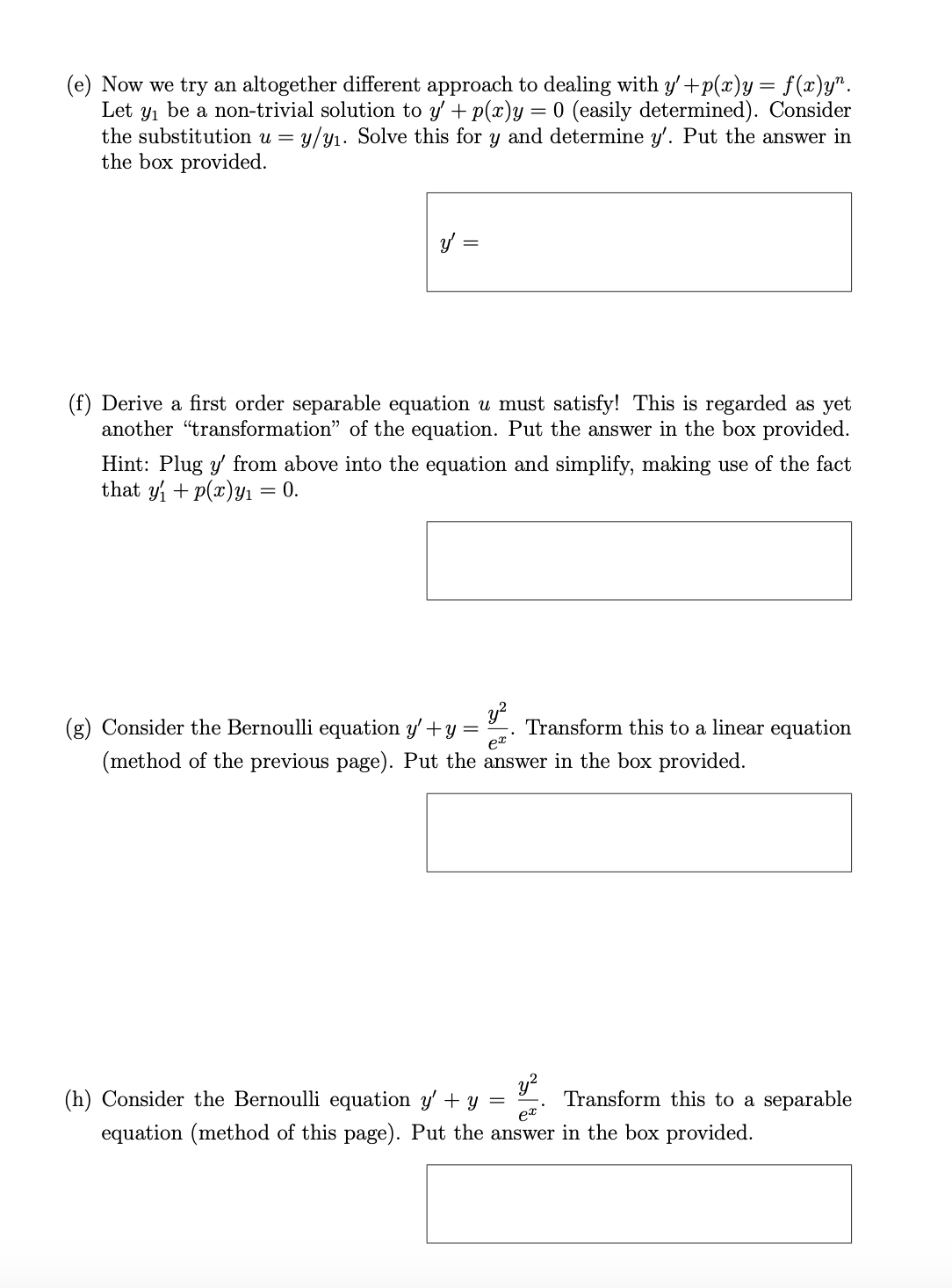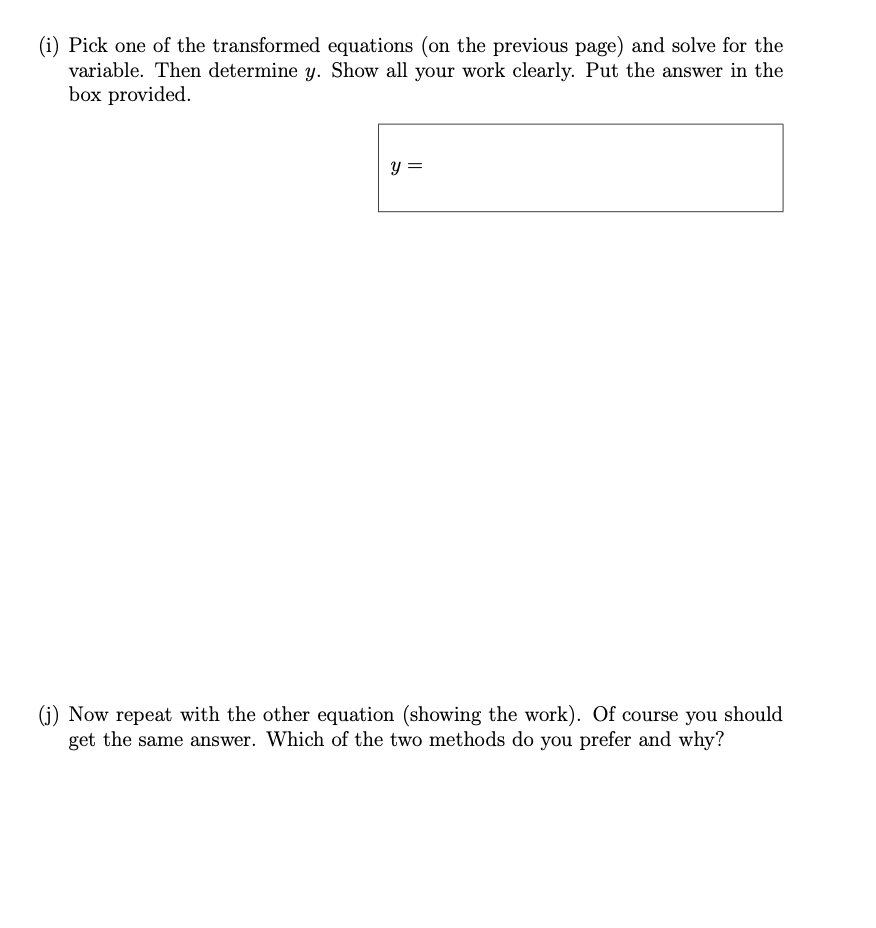Question
(1) Consider a so-called Bernoulli equation: y +p(x)y = f(x)y^n where n is a real number not equal to 0 nor 1. (a) Explain why
(1) Consider a so-called Bernoulli equation: y +p(x)y = f(x)y^n where n is a real number not equal to 0 nor 1.
(a) Explain why this first order differential equation is not linear. Would it be if n were either 0 or 1?
(b) Consider the substitution v = y^(1-n). Determine v' in terms of y'.
(c) Solve for y'.
(d) Derive a first order linear equation v must satisfy! This is regarded as a "transformation" of the equation.
Hint: Plug y' from above into the equation and divide through byy^n.
(e) Now we try an altogether different approach to dealing with y +p(x)y = f(x)y^n.
Let y1 be a non-trivial solution to y + p(x)y = 0 (easily determined). Consider
the substitutionu=y/y1. Solve this for y and determine y' .
(f) Derive a first order separable equation u must satisfy. This is regarded as yet another "transformation" of the equation. Plug y from above into the equation and simplify, making use of the fact thaty'1 + p(x)y1 = 0.
(g) Consider the Bernoulli equation y' + y = (y^2)/(e^x). Transform this to a linear equation.
(h) Consider the Bernoulli equation y' + y = (y^2)/(e^x). Transform this to a separable equation.
(i) Pick one of the transformed equations (on the previous page) and solve for the variable. Then determine y. Show all your work clearly. Put the answer in the box provided.
(j) Now repeat with the other equation (showing the work). Of course you should get the same answer. Which of the two methods do you prefer and why?
I will attach three images that has all the problems on them if the typed out ones dont make sense.



Step by Step Solution
There are 3 Steps involved in it
Step: 1

Get Instant Access to Expert-Tailored Solutions
See step-by-step solutions with expert insights and AI powered tools for academic success
Step: 2

Step: 3

Ace Your Homework with AI
Get the answers you need in no time with our AI-driven, step-by-step assistance
Get Started


